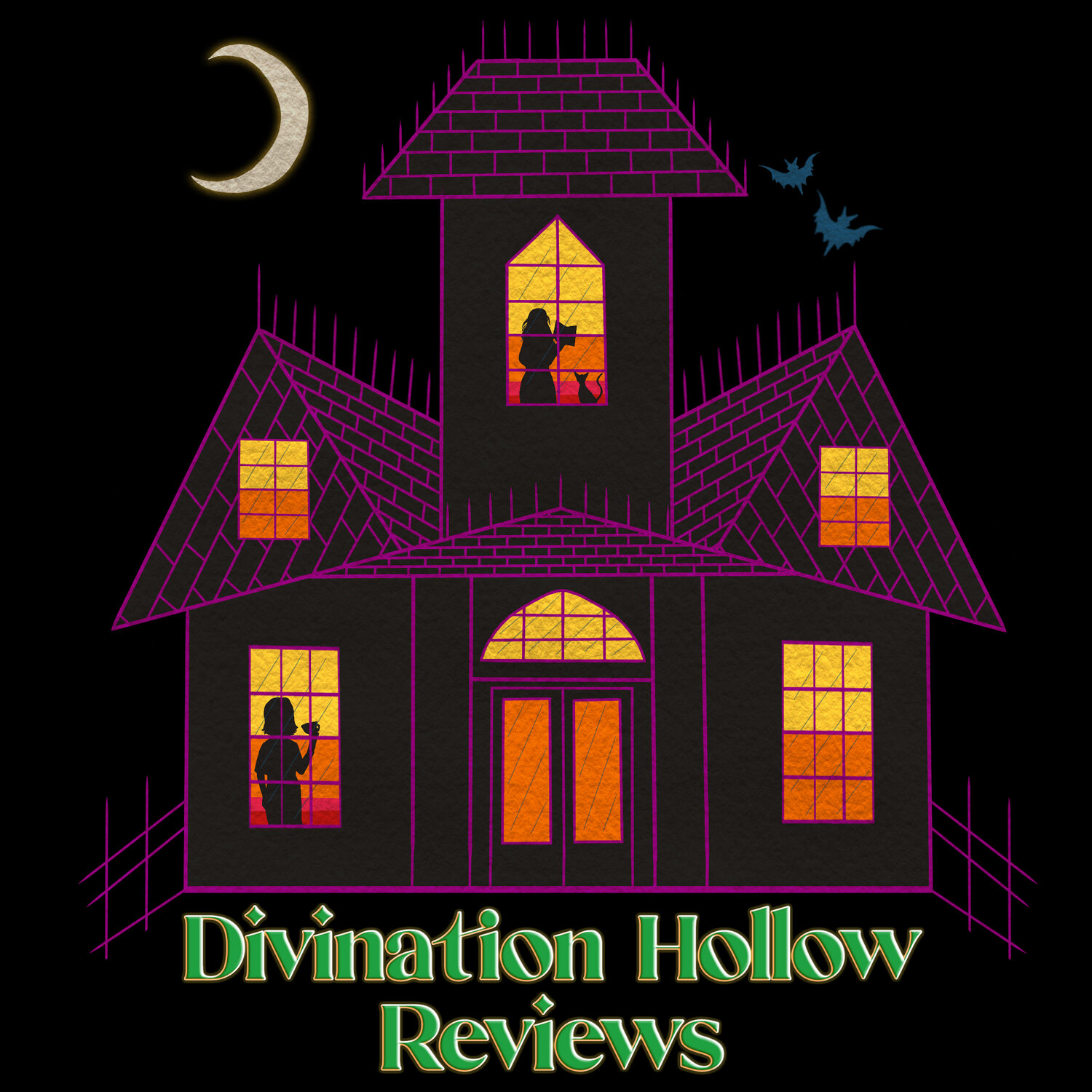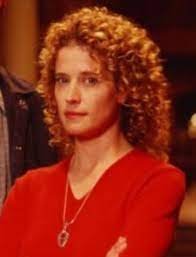Mad Science: An Examination of of Scientists in Sci-Fi & Horror: Paranormal Researchers
This is a new article series, discussing some of the interesting portrayals of science and/or scientists in horror and other genres of dark fiction as well as reality. Last year, I tried to tackle this all at once, but it was just too daunting. I got too overwhelmed and quit after 2000 words. I had a list of 100+ characters who I wanted to mention in some way, all along the scale of good to evil, and covering things in pieces may be easier for me to actually get words on the page and complete this new goal of mine.
This first entry is going to examine two characters in paranormal research. In it, I will mainly be focusing on two female scientists who engage in this line of work. Dr. Joyce Reardon from Stephen King’s Rose Red miniseries & Dr. Claire Kirklin from the “found footage” novel Episode 13. Spoilers for both of those, but we’ll mainly be looking at how these researchers are portrayed, not the stories themselves.
Ghost hunting or paranormal research seems like a natural evolution for people’s desire to communicate with spirits, along with its entertainment value. Mediums, seances, and other spiritualist practices were incredibly popular parlor games a hundred years ago. Kids in the 80s-00s played “Bloody Mary”, Light as a Feather, or with Ouija boards to conjure and chat with spirits. Paranormal research is another way to try and make sense of the world beyond our tangible senses. It adopts the dressing of scientific inquiry and attempts to use the rigor of the scientific method to prove the existence of ghosts or other spiritual beings. Proving anything in science is a monumental task, if not impossible, but paranormal investigators still try, don’t we all! They enlist various pieces of equipment to record changes to the environment of the haunt under current study. Focusing on variables that could be run through most statistical tests would be a good method of trying to appeal to legitimate science. Yet the biggest drawback to any type of field research is the lack of control over variables, making any findings weak results at best.
Dr. Joyce Reardon from Rose Red
The characters I’m focusing on in this piece have two opposing approaches to paranormal research but are quite similar in character and meet similar fates. Dr. Joyce Reardon is a believer, whereas Dr. Claire Kirklin is a die-hard skeptic. The former begins the miniseries planning a paranormal investigation of the sprawling, malevolent Rose Red mansion. She has enlisted the assistance of several others with psychic abilities to help “wake up” the supposedly dormant domicile by staying for a weekend. Rose Red is a character unto itself, eager to join the ranks of Hill House or The Overlook Hotel in destroying lives. Joyce is in danger of losing her position at the nearby university and has faced ridicule by other academics for her belief in the paranormal. Other university colleagues are trying to sabotage or discredit her work. All this fuels her drive to prove that Rose Red is a true haunted house.
Joyce is burning with passion, but Claire begins Episode 13 dejectedly debunking the claims her husband and his team of investigators make at each haunt for their show, Fade to Black. They pitch their show almost as a real-life Mulder & Scully team with the husband and wife presenting their findings to the audience, then letting the viewer make their own conclusions. Claire wants to leave the show as they are working on the final episodes of the first season. She is a physicist by training & longs to return to genuine scientific research, she doesn’t believe they will ever find evidence of spirits due to the laws of thermodynamics and other principles guiding reality. She calls herself a party pooper throughout the first sections and she is kind of right. She is a stick in the mud compared to Joyce’s giddiness at exploring Rose Red. Claire and the team are researching Foundation House, a home with a past as a plantation then as a site of unethical experiments conducted by various scientists within the Paranormal Research Foundation, or PRF. The PRF was not too different from Joyce and her group of “sensitives”. They were attempting to contact spirits with the house by pushing subjects with potential psychic capabilities to their limits in the 1970s. They all disappeared & Fade to Black is trying to solve that mystery.
Regardless of their differing opinions on the existence of ghosts, Joyce and Claire both have incredibly powerful reactions when the spirits make contact. The psychics successfully jar Rose Red from its slumber. It begins eating people again and restarts the never-ending ghostly remodeling. The scientists & subjects of the PRF contacted some spiritual entities in the past who show their presence to the cast and crew of Fade to Black in the present. The ghosts are real, and they want to talk! Joyce is ecstatic to have made contact, but the house is fighting back. Her team is dying & she needs to choose whether to end the experiment early. Claire is shocked. She cannot use her current understanding of physics to explain the phenomena she has witnessed and the team have caught on film. Her mind rushes with the idea of leading the way into an entirely new branch of science. As she isn’t team leader, Claire is not faced with the same choices as Joyce, but she also must decide to stay & complete filming the episode, now a 3-parter.
The cover for Episode Thirteen
Scientists, like many others, can be well-known for their doggedness in pursuit of their theories. It’s no surprise that both women become wholly consumed with untangling the mysteries of the respective locations they are studying now they are convinced ghosts exist. However, they also undergo a flanderization of their personalities. Clinical and rational behavior becomes cold and cruel. Passion for the truth or their subject of interest transforms into an unhinged obsession to find out the explanation, damn anything else. Joyce begins pushing her team harder, mocking and belittling everyone, including an autistic teen girl she moved heaven and earth to include on the team. Claire also goes mask off, insulting her husband to his face and in her journal. She continues relentlessly refusing to consider how her singular focus to study the physics underlying the spirits puts the rest of the cast and crew in danger. Both women are cruel to their male lovers, insulting his intelligence in comparison to her own, thinking of him as a foolish child in a man’s body. While Joyce has hints of alarming behavior earlier in the film, Claire’s coldness feels creepier. I would consider her to be somewhat antagonistic in the latter part of the book, along with some other characters who start to fall into stereotypical tropes after increasing encounters with the spirits.
Both women’s obsession with the ghosts causes them to die. They cannot let go of their pursuit for knowledge to save themselves, becoming ghosts. The best way to know is to experience firsthand, no? Joyce seems regretful but baleful in her fate while Claire is slowly stripped of herself, all deep emotions are based in the physical body, after all. She commits two final acts of mercy (in her mind) then is gone. Joyce remains tethered to Rose Red, another woman bound to the home. Rose Red tends to outright murder men while keeping the women for itself.
While mad scientists are not uncommon, I find it interesting that these two women follow such similar story beats. I have not investigated inspirations for Episode 13, so perhaps Rose Red’s Joyce was a partial basis for Claire. I also wondered what it may say about the general ideas of women in science if two prominent female scientists both go mad from the revelation. In either work, these female scientists are portrayed in a middling to slightly negative way. They may be brilliant but ultimately don’t know what is best for them, compared to the softer or more maternal female characters they share the story with.
Is it a reminder of the biases that women cannot handle certain scenarios at all or as well as men? Another work that suggests mothers and nurturing women are more valuable than childless/ childfree women? That sending girls to school is a mistake or higher education is wasted on these emotionally unstable ladies? Or am I, like most of the investigators in this genre, just seeing what I expect to see?
Overall, I enjoyed these works even though I have many complaints. When considering who else to include for this piece, I could have mentioned the paranormal investigators from Gonjiam: Haunted Asylum or Grave Encounters. While great, those films don’t really include scientists as characters, so I ended up excluding them. They are both fun watches though if you like paranormal research shows and/or found footage! Three of the four lads leading the Ghostbusters are also scientists who focus on paranormal research, but I feel like the film is more focused on cosmic horror & comedy over the ghost hunting, so I excluded them too. I also considered including the enigmatic Séance & Science Brigade from the Southern Reach Trilogy. They are a group like the PRF of Episode 13 but are similarly used for framing without much characterization. However, I may come around to the Biologist/Ghost bird or the researchers within Central from that series in time.
I hope you enjoyed this first entry into mad science!! Look forward to more discussions on scientists or science & reach out if there are any scientists or a topic you think would be interesting!!
Follow Dee on Twitter @sirenofscience and Bluesky @sirenofscience.bsky.social





